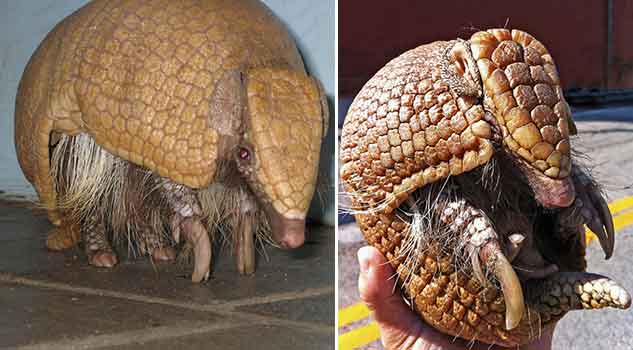


A similar but larger armadillo lived in what is now Missouri during the Pleistocene (a geologic epoch). It isn't the first armadillo to live here. Though this expansion has taken almost 150 years, that's fast for a mammal. Now the northern edge of armadillo territory runs through Kansas, Missouri, Tennessee, Alabama, Georgia and South Carolina. In Florida, releases from a zoo in 1924 and a circus truck in 1936 started another migrating population. First recorded in Texas in 1849, it expanded its range north and east, at times aided by pranksters and animal dealers. Only the nine-banded migrated into this country. Two of those, the nine-banded and the northern naked-tail armadillo, also live in Central America and Mexico. Armadillos exist only in the Americas, with South America home to all 20 species. (Conservationist readers participated in the survey.)Īrmadillo, meaning "little armored one," was the name the Spanish gave shell-wearing mammals they encountered in the New World. Survey respondents in areas around Cassville, Roaring River State Park and West Plains reported the most sightings.
.jpg)
Schell, then graduate students at Southwest Missouri State University, Springfield. Since 1980, the nine-banded armadillo has made itself at home in Missouri, moving northward to and even across the Missouri River, according to a 1994 report by Kimberley Lippert Mackey and Paul T. Novemcinctus refers to the nine narrow plates that allow flexibility in its midsection. This timid mammal in search of food at the Drury-Mincy Conservation Area in Taney County is Dasypus novemcinctus, the nine-banded armadillo, a k a the common long-nosed armadillo. All it wants to do with those claws is dig for the insects its sensitive, snuffling nose detects underground. The size of an extra-large house cat, it's oblivious to my presence. What else? Aha! Long, sharp claws!" The artist draws it springing into the air, claws spread.īut the creature I'm approaching is real, a living work of nature's art, and it's no threat to me, though it might jump three or four feet straight up if startled. More detail - hair sticking out between the chinks in the carapace and below it. Tapering tail with ever decreasing armor rings. Long snout, small mouth, bumpy tongue covered with sticky saliva. "I'll draw a creature born with armor," says the artist. What I see has to be science fiction straight out of an artist's imagination.


 0 kommentar(er)
0 kommentar(er)
